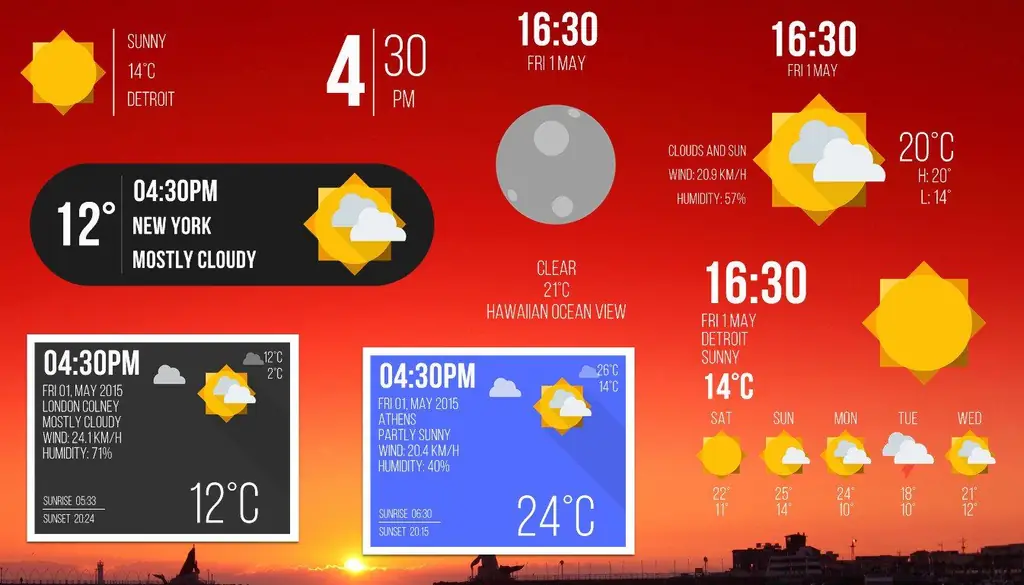
Table of contents:
- Author Bailey Albertson [email protected].
- Public 2023-12-17 12:53.
- Last modified 2025-01-23 12:41.
How to get gadgets back and add new ones to Windows 10
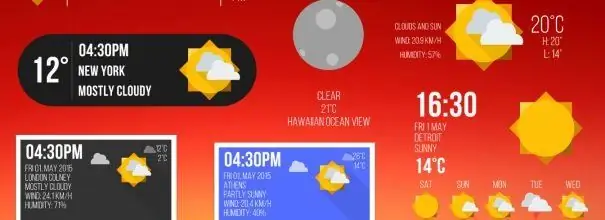
The most convenient and fastest way to get the information you need on an ongoing basis is to use a widget. But in Windows 10, the placement of gadgets on the desktop is not the same as in previous versions of the operating system.
Content
- 1 What are widgets for
- 2 Widgets in Windows 10
-
3 Adding widgets
-
3.1 Using sites
- 3.1.1 Wingdt.com
- 3.1.2 Soft.mydiv.net
-
3.2 Using third-party programs
- 3.2.1 Gadgets Revived
- 3.2.2 8GadgetPack
- 3.2.3 Video: The Return of Old Gadgets
-
- 4 Removing the gadgets panel
- 5 What to do if widgets don't work
What are widgets for?
Widgets (gadgets) are small applications that are located on the desktop. They can show the time, taking the form of a different kind of clock, the price of the dollar, the weather for today and the coming days, a news list, etc. There are also mini-game gadgets, for example, tag or a sapper, with their help you can pass the time while waiting …
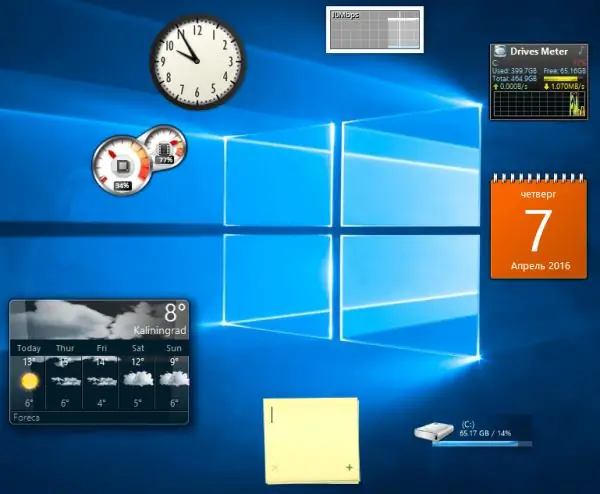
Widgets suggest information you need
Roughly speaking, widgets are able to provide any information in a convenient format right on the desktop. The main thing is to find a suitable widget. Some of them only work with the Internet, others even offline.
Widgets in Windows 10
Starting with Windows 8, Microsoft has ditched built-in widgets as they could potentially threaten user security. Instead, they are replaced by tiles in the Start menu, activated by default. The tiles contain weather forecasts, recommended games and apps, the latest news from various social networks, and other information. They can be controlled: move, change the volume, delete.
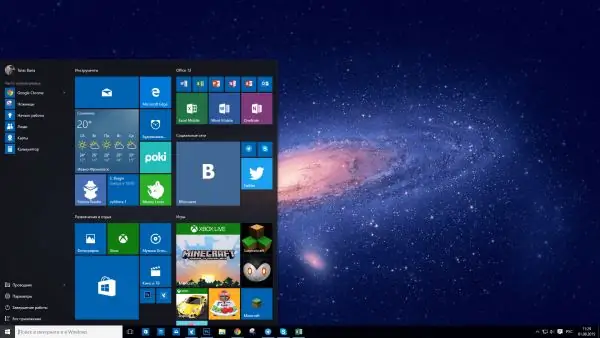
The Start menu has an analogue of widgets - tiles
If your tiles are missing, you can enable them manually:
-
While in the computer settings, go to the "Personalization" section.

Moving to personalization We open the section "Personalization"
-
In the "Start" sub-item, click on the line "Select which folders will be displayed in the menu."

Go to the folder list Click on the line "Select which folders will be displayed in the menu"
-
In the expanded list, activate the items you need.

Adding a folder to the menu We activate the necessary folders
-
To add a specific application to the tiles, use the "Pin to Start" function, which is available after right-clicking on it.

Docking to the home screen Selecting the "Pin to Home Screen" function
Adding widgets
Windows 10 doesn't have built-in gadgets, so you won't be able to put any mini-program on the desktop using standard tools. But there are ways to add the necessary widgets yourself - through a third-party program or website.
Using sites
There are enough sites that specialize in hosting widgets for Windows 10. You can easily find them by typing in any search engine: "Download widget for Windows 10". Let's consider the most popular and convenient options.
Wingdt.com
This site provides widgets for all versions of the Windows operating system: from XP to 10. Going to the site and selecting the Windows 10 section, you will see a huge list of gadgets with a five-star rating system. On the left side of the site there is a block sorted by type. Having found the necessary gadget in it, click on the "Download" button.

Select the widget and click the "Download" button
A detailed description and a download link will appear. After you download the widget, all that remains is to go through the installation procedure, which looks like installing a regular program.
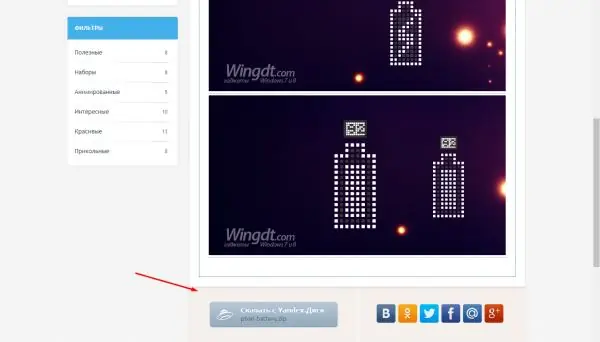
We look at the description of the widget and click the "Download" button
Soft.mydiv.net
Going to the site, select the section "All for Windows" - "Miscellaneous" - "Widgets for Windows". Here you will find a list of well-known and handy widgets that came from previous OS versions. Each gadget can be downloaded separately. The installation procedure is no different from installing any application.
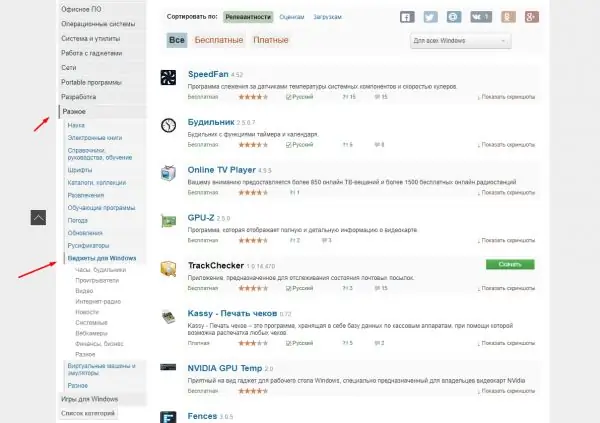
Go to the section "Widgets for Windows" and download the necessary gadget
Using third-party programs
There are a lot of programs out there to get back widgets from Windows 7 and previous versions of the system. If one of them does not work in your case (in Windows 10, widgets do not always function correctly), use another, some should definitely work.
Gadgets revived
-
The program is free, the only thing you need to do is download and install it from the official website. After that, a new item "Gadgets" will appear in the context menu invoked by right-clicking on an empty space on the desktop.

Go to the gadgets panel Opening the "Gadgets" section
-
Here you will see the standard gadgets control panel. With it, you can select the desired widget, place and edit it.

Gadgets Revived Gadgets Panel Add and edit widgets
- In the future, you can remove an unused widget by right-clicking on it and selecting the "Unpin" function.
The program contains the following gadgets: weather, clock, slide show, calendar, currency, tags, news headlines, temperature meter of computer components.
8GadgetPack
-
Also a free program, but with two differences: it is not fully translated into Russian, but it has a larger supply of widgets. The transition to the gadgets control panel is carried out in the same way, through the desktop context menu, but the list of offered mini-programs is longer.

8GadgetPack Gadgets Panel 8GadgetPack offers an extended list of available gadgets
-
In the settings, you can disable autoloading of widgets at login, change their size, enable hotkeys to go to widget management.

8GadgetPack Settings In the settings you can change the parameters of the widgets
The program contains all the same widgets that were in the previous application, as well as gadgets for more detailed system monitoring and sound control. In addition, some widgets have additional features.
Video: the return of old gadgets
youtube.com/watch?v=SNpMl-eLJYI
Removing the gadgets panel
You can delete one widget by right-clicking on it and selecting the "Delete" or "Unpin" button. To get rid of the widget panel, you need to uninstall the program with which it appeared.
-
Open the control panel. You can find it using the system search bar.

Go to control panel Opening the control panel
-
Write in the search "uninstall" and go to the sub-item "Uninstall the program".

Go to uninstall the program Open the section "Removing the program"
-
A list of all third-party applications available on your computer will open. Select the program that contained the widget package and click on the "Remove" button. Confirm the action and wait until the program is erased from the device. You may need to restart your computer for the changes to take effect.

Removing a program Remove the program that caused the widgets to appear
What to do if widgets don't work
Since widgets are not initially provided in Windows 10, their performance depends only on the creators of the application that you use to add gadgets. Some users are faced with the fact that gadgets disappear from the desktop, do not fix, glitch or freeze.
The only way out of this situation is to use another program or install the desired widget separately. Most importantly, do not forget to first erase the non-working program (how to do this is described in the section "Removing the gadgets panel"), otherwise it will conflict with the new one.
Windows 10 has an analogue of widgets - icons built into the Start menu. But with the help of third-party programs, you can return gadgets from previous versions of the system or add new ones written specifically for the latest Windows.
Recommended:
Locks For Plastic Doors: Which Are Better To Use And How To Install Correctly
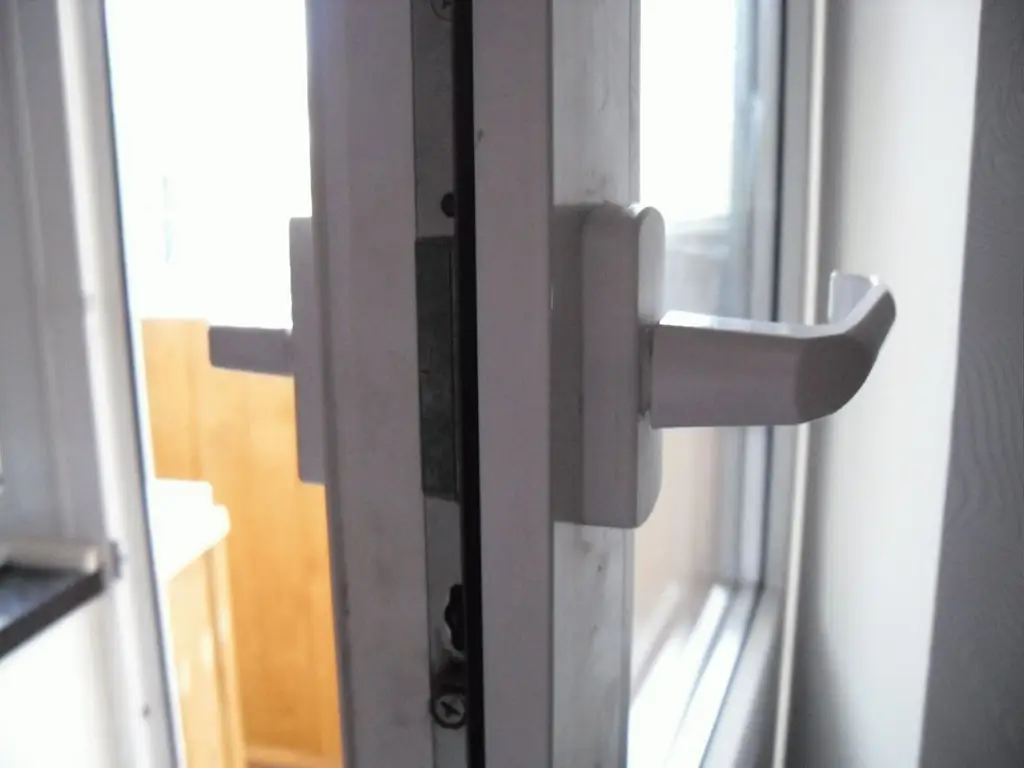
The main types of locks for plastic doors. Rules and sequence of work for the installation and dismantling of such locks
Locks For Glass Doors With A Description And Characteristics, Which Are Better To Use And How To Install Correctly
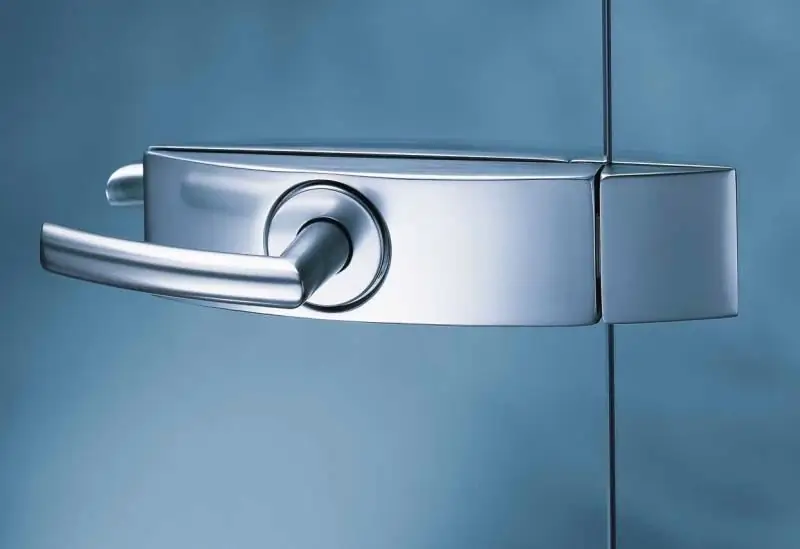
What locks to choose for glass doors. The most popular types of devices, their pros and cons. Features of installation, repair and dismantling of various models
Screensavers On The Desktop For Windows 10 - How To Install, Change Or Remove Altogether, What To Do With Emerging Problems
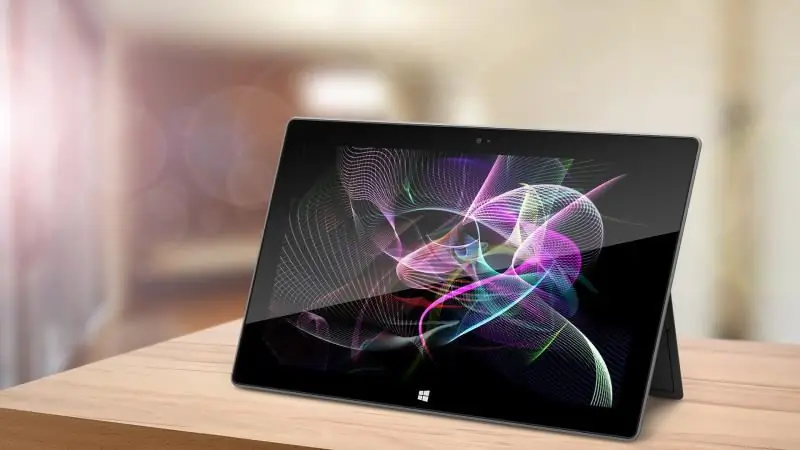
How to Install and Configure Screen Saver Settings for the Desktop on Windows 10: Step-by-Step Instructions. Possible errors and methods of their correction
How To Install Clock On Windows 10 Desktop - Instructions And Tips For Adding And Configuring Widget
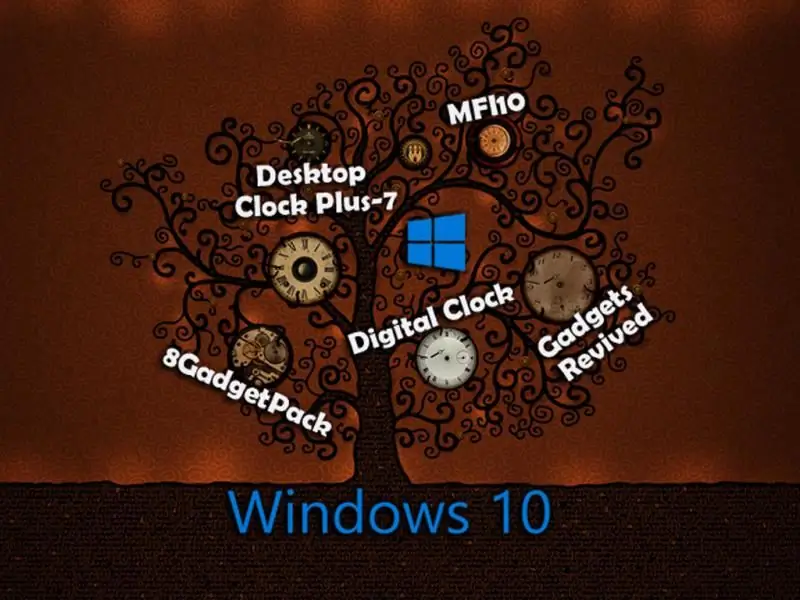
Where to find and how to install the Clock widget on the desktop in Windows 10. Popular programs for installing widgets: Gadgets Revived, MFI10, 8GadgetPack
Which People And Countries Are Waiting For Friday The 13th, And Which Are Afraid

Who is looking forward to Friday the 13th, and who is afraid of this mystical date
